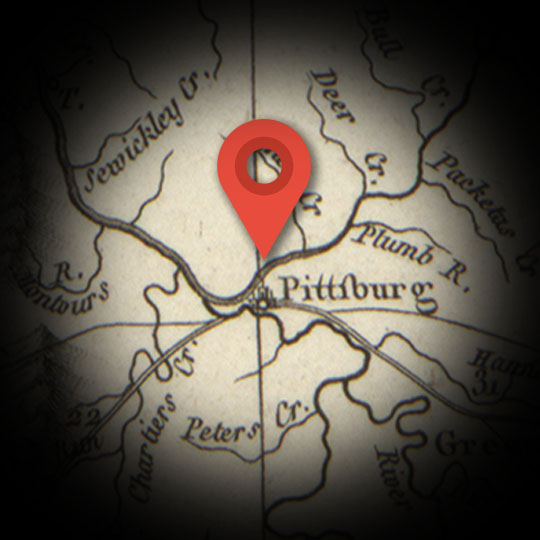PITTSBURGH
Explore
Alexander Hamilton wrote George Washington from Pittsburgh, Pennsylvania, on November 17, 1794. The purpose of the message? To let the president know that the so-called Whiskey Rebels had been routed and were on the run, and that no reason remained to keep a large number of militia troops in the field any longer.
Hamilton attested to about 150 prisoners being in his custody, including the prominent local, Burgess George Robinson. Many of these prisoners would be marched all the way back to Philadelphia and placed in the prison just down Chestnut Street from Hamilton’s residence at the time.
Memories in Western Pennsylvania would prove long regarding Alexander Hamilton’s forcefulness—if not brutality—in dealing with the excise tax protesters. It has been alleged that, throughout the region for generations to come, Hamilton’s portrait would only be hung upside down.
Hamilton and his political party, the Federalists, were, in general, doomed to become and remain unpopular for decades. This is thanks largely to the influence of Thomas Jefferson and the allies he brought to power in what Jefferson referred to as the “Revolution of 1800.”
Pittsburgh in 1794 was little more than a rough frontier town. A census two years later would reflect 1,300 inhabitants. And yet, at the time it was known as “the Gateway to the West” because of its confluence of major rivers. This made possible water travel all the way from the Great Lakes to the Mississippi Valley and, finally, the Gulf of Mexico.
After Hamilton’s murder, Aaron Burr would pass through Western Pennsylvania. Burr intended to use its river access in a bid to raise an army of loyalists, float them to New Orleans, and from there (Burr’s maneuvers remain unclear) seek either to break the burgeoning West off from the original thirteen states to create a new country, attack Mexico, or unite with the British to return the United States to royal control.
In a young nation that had already been looking hungrily for many years towards the Pacific, Pittsburgh would be the farthest west and the deepest into the “frontier” that Alexander Hamilton would ever travel.
Hamilton would begin an arduous, cold, and rain-drenched, weeks-long journey back to Philadelphia.
The Whiskey Campaign would mark his closing act as Secretary of the Treasury; he would tender his resignation and prepare to move back to New York shortly upon his return.

TIME FRAME:
November 17, 1794
